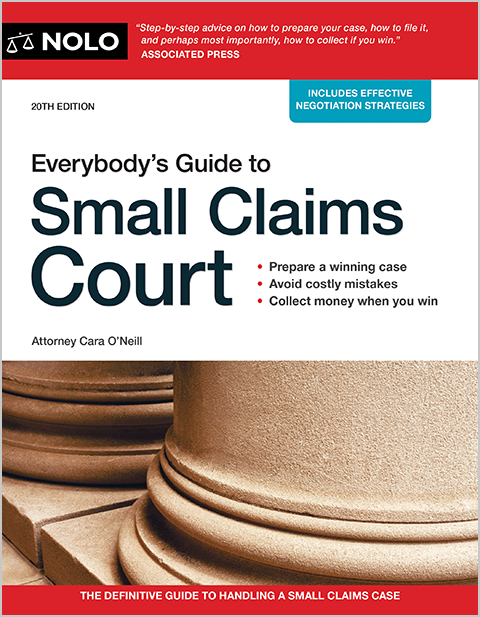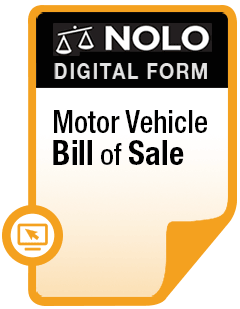All traffic collisions have the potential to cause injury or death. By understanding the common types of accidents and what causes them, you can help make the roads safer for all.
The possibility of a car crash exists every time a driver gets behind the wheel, so it's important to understand the risks before heading out on the road.
We all want to be safer drivers—to avoid crashes, hold insurance rates in check, and keep ourselves and others free from injury. By learning about the common types of car accidents, what causes them, and how to avoid them, you can make your next driving trip a safer one.
7 Common Types of Car Collisions
All types of traffic collisions have the potential to cause injury or death. A 2020 National Safety Council (NSC) study found that most motor vehicle accident-related injuries and fatalities are caused by crashes with other cars, with single-car crashes coming in second.
Let's look at the seven most common types of car accidents (though not presented here in order of frequency), and liability issues unique to each.
1. Rear-End Collision
Rear-end collisions make up the majority of traffic accidents. A National Highway Traffic Safety Administration (NHTSA) study found that about 29% of crashes resulting in serious injury were from rear-end collisions. In 2020 alone, rear-end accidents resulted in 2,428 deaths, amounting to 6.8% of all traffic fatalities that year according to the Insurance Information Institute (III).
Liability is often simplest with a rear-end accident. The tailing driver is typically presumed liable. Most of these accidents occur because of distracted driving or failure to keep a safe following distance. Failure to properly maintain brakes can also cause or contribute to a rear-end crash.
Many rear-end accidents occur at lower speeds, because the tailing driver usually at least tries to stop their vehicle prior to impact. But if speeding or reckless driving is involved, the collision impact can be severe.
2. Head-On Collision
Head-on collisions can be devastating. Many involve a wrong-way driver on a one-way street or highway exit ramp. Head-on accidents can also occur when a driver crosses into another lane or over a median.
Head-on crashes were responsible for 3,631 deaths in 2020, or 10.2% of total fatal crashes that year. It's no surprise that fault normally lies with the driver who crossed a median or drove in the wrong direction.
3. Sideswipe Accident
Accidents where a car brushes against another vehicle are called sideswipes. They can involve lane drift, especially when two vehicles meet and pass on a narrow road, or failure to check blind spots before changing lanes or merging.
Sideswipe accidents are often minor, but serious injuries can result, especially when a motorcycle is involved.
4. Side-Impact Crash
Side-impact accidents occur most often at intersections, when a driver runs a stop light or stop sign, or fails to observe the proper right of way. Unlike a sideswipe, a side-impact collision involves the front end of one vehicle hitting the side of another.
"T-bone" crashes, where one vehicle strikes another at a 90-degree angle at or close to the driver or passenger doors, are dangerous because most vehicles have little reinforcement in those areas.
T-bone crashes are often high-speed collisions resulting in concussions, broken bones, and even death. These collisions make up 35.4% of traffic accidents but cause nearly 50% of traffic fatalities, according to the NSC.
5. Multi-Vehicle Collision
Technically, any two-car crash is a "multi-vehicle" accident, but in insurance-speak, this term typically describes a collision involving three or more vehicles. This category includes chain reaction collisions, where one car hits another (usually from behind), causing a "chain" of collisions behind the original crash.
You may hear these accidents reported on the news as "multi-car pile ups," often occurring on freeways in bad weather, when speed and poor visibility combine. One mistake can lead to multiple collisions, compounding property damage and injuries.
6. Rollover Accident
Any vehicle can roll over, but the wheelbase, weight, and height combination of SUVs, pickups, and vans make them more prone to these kinds of accidents. Rollover risk increases in wet or icy conditions, or when a driver takes a turn too quickly. Rollovers can also occur after a side-impact collision, or after a vehicle leaves the roadway.
Statistics from 2020 reveal that 7,182 drivers and passengers died in rollover accidents, according to the Insurance Institute for Highway Safety (IIHS). In most of these fatal accidents, a front impact collision preceded the rollover.
7. Single-Vehicle Crash
Single-vehicle crashes often involve collisions with a fixed object like a fence, tree, or telephone pole. While inattention and other driver errors are often behind single vehicle accidents, bad weather and driver efforts to avoid animals (or other road hazards) can also play a part.
A single-car accident can also be the result of a driver hitting a stationary object or being forced to leave the roadway in order to avoid a head-on collision. In these cases, liability could be pinned on the driver who drifted into oncoming traffic.
Common Causes of Car Accidents
Now that you're aware of some common types of car accidents, you might be wondering what causes them. The NHTSA divides the causes of car accidents into three categories: driver error, vehicle malfunction, and environmental conditions.
Driver Error
The NHTSA devotes considerable resources to reducing risky driving and driver error. Data reveals that as many as 94% of car accidents are caused by driver inattention and other mistakes, including:
- Distracted driving. The prevalence of smartphones and other devices is a big factor behind the recent increase in distracted driving. In 2018 alone, 2,841 people died and 400,000 were injured in traffic accidents involving distracted drivers, according to the NHTSA. Traffic fatalities linked to distracted driving climbed to 3,142 in 2020.
- Impaired driving. Drivers impaired by drugs, alcohol, or prescription medicine represent a big risk to everyone on the road. A blood alcohol concentration of .02 is enough to reduce the ability to multitask (for example, paying attention to road conditions and traffic lights at the same time). Impaired drivers also have difficulty tracking moving items or processing road signs, magnifying the danger. Driving under the influence (DUI) can lead to arrest and criminal charges.
- Speeding. Speeding is a consistent cause of driving-related deaths. In 2020, excessive speed was a factor in 29% of traffic fatalities, according to the NHTSA.
- Ignoring or not seeing traffic signals and stop signs. In a survey conducted by the AAA Foundation for Traffic Safety, 85% of drivers said it was "very" or "extremely" dangerous to enter an intersection when the traffic light has just turned red. But nearly 26% of those respondents reported doing exactly that within the last 30 days.
- Drowsy driving. Many people associate drowsy driving with long-haul truckers or nighttime road trips. However, the NHTSA links these incidents to our 24/7 culture, longer commutes, and packed schedules. Coffee and energy drinks aren't the answer. Getting adequate sleep, knowing the side effects of medications you're taking, and listening to your body can all help.
- Inexperience. The IIHS reports that teen drivers are four times as likely to be involved in a car accident compared with drivers over the age of 20. Graduated driver's licensing programs and other restrictions on young drivers can help reduce this risk.
- Road rage. Traffic conditions, stress, and driver personality characteristics can all contribute to road rage, which can lead to collisions and other dangerous driving-related incidents. When you're on the road, try to keep cool with the bigger picture in mind.
Vehicle Issues
Vehicle-related issues cause 2% of traffic accidents, according to the NHTSA. Many of these incidents are tire- or wheel-related (35%), with brakes (22%) also playing a big part. Mechanical problems with steering, suspension, and engines can also cause or contribute to an accident.
While some of these issues relate to vehicle manufacturing defects, they're most often linked to improper maintenance or the vehicle owner's failure to respond to a recall notice.
Environment and Weather
Environmental causes of accidents include weather, road conditions, and traffic signal or sign failures. In 50% of these accidents, ice and road debris are the cause, the NHTSA says. Glare (17%) takes second place on this list.
Tips for Avoiding a Car Accident
Most car accidents are avoidable—at least on your end. But you can't control the decisions and actions of others. So, always wear your seatbelt, and take the following steps to reduce the chance of a car crash.
Act on Recall Notices
Receiving a recall notice doesn't mean your car is low quality. Most often the manufacturer found a defect and would rather avoid future problems (including liability). It can be easy to ignore recall notices, especially if the issue seems minor, but it's important to get in the habit of following the manufacturer's instructions.
Stay Current on Maintenance and Repairs
Follow your vehicle manufacturer's recommended maintenance schedule. Get your brakes, tires, and other key safety equipment inspected regularly. Take your vehicle to a qualified mechanic at the first sign of a problem. You face liability for any accident that might be linked to your failure to properly maintain or repair your car.
Avoid Electronic Distractions
The prevalence of electronic devices is a big reason why the NHTSA focuses so much on distracted driving. It recommends:
- keeping devices out of reach while driving
- offering to make calls or adjust navigation for a driver if you're a passenger, and
- setting a good example of responsible device usage for your teen drivers.
Don't Drive Impaired
If you plan to go out drinking, take a taxi, rideshare service, or public transportation—or designate a non-drinking driver. The same goes for driving after smoking pot in states where recreational marijuana use has been decriminalized.
Slow Down
Speed remains a big contributor to traffic injuries and death, especially combined with inclement weather or poor road conditions.
If it's a wet or icy day—slow down. If you see potholes or road debris, slow down. Road construction? Again, slow down. By giving yourself plenty of time to reach a destination, you'll be less likely to place yourself and others at risk.
Stay Vigilant Behind the Wheel and Keep a Safe Following Distance
Don't tailgate other drivers, even if slow driving annoys you. If they brake suddenly, you're more likely to hit them if you're following too close.
Be aware of your environment, including road conditions and potential hazards. Keep a safe following distance if traffic is stop-and-go. Check blind spots before you merge or change lanes, and never pass on a two-lane road with a solid line.
Drive defensively, following the rules of the road. And make sure you're not too tired to be behind the wheel. (More safe-driving tips for all motorists can be found at KidsHealth.org.)
Do You Need a Car Accident Attorney?
If you've been involved in any of the types of car accidents we've discussed here, there are a number of things you can do to protect yourself and any injury claim you end up making. Learn more about what to do after a car accident.
At some point it might make sense to discuss your situation with an experienced legal professional, especially if you've suffered significant injuries.
If your claim is straightforward and you're confident you can fight for a fair result, handling your own car accident case might make sense. But any time the insurance company is pushing back on key issues like fault for the crash or the legitimacy of your injuries, there's no substitute for having a lawyer on your side. Learn more about how an attorney can help with your car accident claim, and get tips on finding the right injury lawyer.



